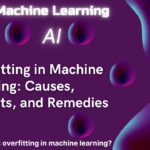In the ever-evolving landscape of technology, terms like AI, Machine Learning (ML), and Thermal Image Processing have become increasingly common. However, their nuances are often misunderstood. Let’s delve into these concepts to unravel their differences and unique applications.
Artificial Intelligence (AI):
Artificial Intelligence refers to the simulation of human-like intelligence / Genius in machines. It involves creating algorithms and systems that can perform tasks that would typically require human intelligence. AI aims to enable machines to reason, learn, problem-solve, and adapt to different situations. It encompasses a wide range of techniques, from rule-based expert systems to complex deep learning models. The core idea of AI is to imbue machines with the ability to mimic human cognitive functions, enhancing their capabilities far beyond traditional programming.
Machine Learning (ML):
Machine Learning is a subset of AI that focuses on the development of algorithms that enable machines to learn from data. Unlike traditional programming, where explicit instructions are provided, in ML, systems learn patterns and insights directly from the data they are exposed to. It encompasses various approaches, including supervised learning (where models learn from labeled data), unsupervised learning (finding patterns in unlabeled data), and reinforcement learning (systems learn through trial and error). ML algorithms improve their performance over time as they are exposed to more data, making them adept at tasks like image recognition, language translation, and recommendation systems.
Thermal Image Processing:
Thermal Image Processing involves capturing and analyzing infrared radiation emitted by objects based on their temperature. This process creates thermal images that represent temperature variations across a scene. These images reveal heat signatures that are invisible to the human eye and provide valuable information for a variety of applications. Thermal imaging is widely used in areas like security and surveillance, where it can detect intruders even in complete darkness. It’s also utilized in industrial settings for equipment monitoring, energy efficiency analysis, and predictive maintenance.
Key Differences:
1. Scope and Focus:
a. AI is a broad concept focused on creating intelligent machines that can perform tasks requiring human-like cognitive abilities.
b. ML is a subset of AI, concentrating on algorithms that allow machines to learn and improve from data.
c. Thermal Image Processing is a specific application that involves capturing and analyzing heat signatures to extract information.
2. Learning Paradigm:
a. AI encompasses a wide range of techniques, including rule-based systems and machine learning models, to achieve its goals.
b. ML primarily relies on learning from data to improve performance, with different learning paradigms such as supervised, unsupervised, and reinforcement learning.
c. Thermal Image Processing doesn’t involve learning from data like ML; instead, it’s about extracting meaningful insights from the captured heat patterns.
3. Applications:
a. AI’s applications are diverse and extend to areas like natural language processing, robotics, autonomous vehicles, and more.
b. ML finds applications in speech recognition, recommendation systems, fraud detection, medical diagnosis, and many other fields.
c. Thermal Image Processing is specific to visualizing temperature variations and is widely used in security, industrial monitoring, and energy analysis.
4. Data Requirements:
a. AI systems might require structured data, expert knowledge, and rule-based programming, depending on the approach used.
b. ML algorithms thrive on large datasets to learn and generalize patterns effectively.
c. Thermal Image Processing relies on thermal imaging data captured by specialized sensors.
5. Complexity and Training:
a. AI can range from simple rule-based systems to complex deep neural networks, requiring varying levels of expertise to develop.
b. ML models require training on extensive datasets, adjusting parameters iteratively to improve performance.
c. Thermal Image Processing involves image preprocessing and analysis techniques specific to thermal images.
6. Human Interaction:
a. AI systems can operate autonomously, making decisions and performing tasks without human intervention.
b. ML models often require human involvement in data labeling, feature engineering, and model selection.
c. Thermal Image Processing systems are usually automated once the image analysis techniques are established.
In conclusion, while Artificial Intelligence serves as the overarching concept that aims to create machines with human-like intelligence, Machine Learning focuses on algorithms that enable these machines to learn from data. Meanwhile, Thermal Image Processing deals with extracting information from heat signatures captured through thermal imaging. Each of these fields has its own significance and applications, contributing to the advancement of technology and enhancing our understanding of the world around us.










